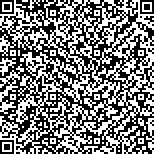王冉,胡川,王欣,等.基于虚拟现实的生物反馈联合重复经颅磁刺激对脑卒中恢复期患者吞咽障碍的影响[J].中华物理医学与康复杂志,2022,44(5):407-411
扫码阅读全文

|
| 基于虚拟现实的生物反馈联合重复经颅磁刺激对脑卒中恢复期患者吞咽障碍的影响 |
|
| |
| DOI:10.3760/cma.j.issn.0254-1424.2022.05.005 |
| 中文关键词: 吞咽障碍 生物反馈 重复经颅磁 虚拟现实 脑卒中 |
| 英文关键词: Dysphagia Biofeedback Transcranial magnetic stimulation Virtual reality Stroke |
| 基金项目: |
|
| 摘要点击次数: 5341 |
| 全文下载次数: 5576 |
| 中文摘要: |
| 目的 观察基于虚拟现实的生物反馈疗法联合重复经颅磁刺激(rTMS)对脑卒中恢复期患者吞咽功能的影响。 方法 选取脑卒中恢复期吞咽障碍患者80例,按照随机数字表法将其分为对照组、磁刺激组、生物反馈组、联合治疗组,每组20例。每组均接受常规吞咽功能训练,磁刺激组给予患侧大脑半球rTMS,生物反馈组接受虚拟设备中的生物反馈训练,联合治疗组接受生物反馈训练和rTMS,共4周。治疗前和治疗4周后(治疗后),采用功能性经口摄食量表(FOIS)和标准吞咽功能评定量表(SSA)评估患者的吞咽功能改善情况,采用视频透视吞咽检查(VFSS)对患者口腔期、咽期及误吸状况进行量化评价。 结果 治疗后,4组患者FOIS、SSA评分及口腔期、咽期、误吸VFSS评分均较组内治疗前明显改善(P<0.05)。进一步比较发现,联合治疗组治疗后FOIS[(6.10±1.07)分]、SSA[(21.00±5.15)分]评分及口腔期VFSS[(2.70±0.73)分]、咽期VFSS[(2.85±0.49)分]、误吸VFSS[(3.55±0.51)分]评分均优于对照组、磁刺激组和生物反馈组(P<0.05)。 结论 基于虚拟现实的生物反馈疗法联合rTMS能改善脑卒中恢复期患者的吞咽功能,值得临床应用。 |
| 英文摘要: |
| Objective To observe the effect of combining biofeedback therapy (BFT) based on virtual reality technology with repeated transcranial magnetic stimulation (rTMS) on dysphagia among stroke survivors. Methods Eighty patients were randomly divided into a control group, an rTMS group, a BFT group and a combined treatment group, each of 20. In addition to routine dysphagia rehabilitation, the rTMS and BFT groups were given those treatments, while the combined treatment group was given both for 4 weeks. Swallowing function was evaluated before and after the treatment using the standardized swallowing assessment (SSA) and the functional oral intake scale (FOIS). Videofluoroscopy was used to quantify the subjects′ oral and pharyngeal phases and their aspiration status. Results Significant improvement was observed in the average FOIS and SSA scores, as well as in the average oral and pharyngeal phases and in aspiration. The combined treatment group′s results were significantly better in all those aspects than those of the other 3 groups. Conclusion The combined application of biofeedback therapy based on virtual reality technology and repeated transcranial magnetic stimulation can improve the swallowing function of stroke survivors with dysphagia. It is worthy of clinical promotion. |
|
查看全文
查看/发表评论 下载PDF阅读器 |
| 关闭 |